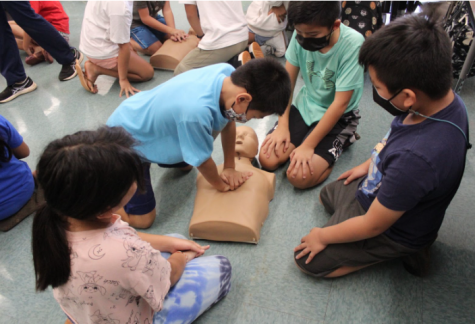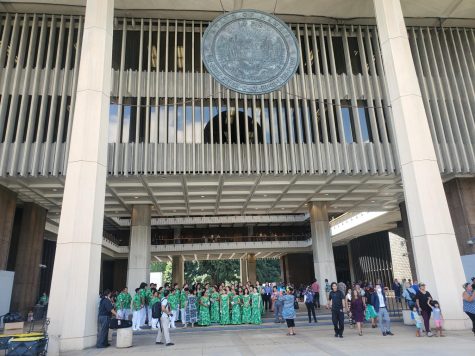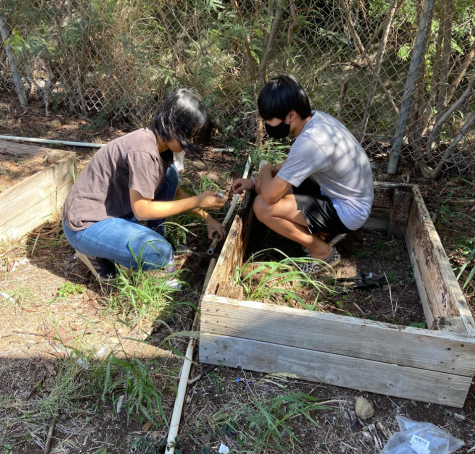Hawai’i braces for climate change
May 15, 2019
The most critical issue of our generation is climate change. The time for debate over its existence has passed. It is time to discuss solutions to the many problems climate change bears; rising sea levels, extreme weather events, and economic damage. The question on all young Oahu residents minds now is; how is Oahu preparing for the dangers that lurk in the relatively near future?
Shocking tools such as the Hawaiʻi Sea Level Rise Viewer provided by the Pacific Islands Ocean Observing System (PacIOOS) show just how much we could lose with up to a half a foot rise in the sea level. The Ala Wai Canal would begin to overflow, most of Diamond Head beach would be lost, and Hawaiʻi Kai would begin to flood as well.
According to PacIOOS, these events are projected to happen as soon as 2030. A one-foot increase in sea level is expected to occur as early as 2050, double the rise I just described.
Last year in Hanalei, in just 24 hours, 50 inches of rain fell. The unexpected downpour caused significant flooding, which destroyed people’s property and, according to the Huffington Post, “at least 350 people were evacuated.” Events like these are just the beginning; extreme weather events will increase as climate change gets worsens.
According to Tetra Tech, “Chronic flooding would render more than 25,800 acres of land unusable statewide… the state could see $19 billion in lost land and structures-including flooded roadways, 20,000 people displaced, and 550 lost cultural sites.”
The inevitable economic damage due to climate change could ruin our state. Even now, it’s hard to find an extra $19 billion, or a place for 20,000 homeless citizens, or a replacement for 550 significant cultural sites. Consider what would happen when climate change adds even more stress to an already over-stressed state.
How is Hawaiʻi preparing for all of this or trying to prevent it? In 2016 the City and County of Honolulu Office of Climate Change was established. Their goal: “tracking climate change science and potential impacts on City facilities,” to “increase community preparedness” and insert “environmental” and “sustainable” programs into city policy.
They also came up with the state’s Climate Action Plan (CAP). The CAP has four main components: 1. take a local inventory of greenhouse gas (GHG) emissions; 2. have a series of target emissions reduction goals and dates relative to a baseline year or amount; 3. make a comprehensive list of actions that will reduce or eliminate carbon pollution to achieve those emission reduction targets; and 4. have community outreach to build awareness and understand priorities and concerns from a diverse set of stakeholders and residents.
According to the City and County of Honolulu 2019 Annual Stability Report, many of these goals are currently being met. We are increasing our use of sustainable energy, we have begun to take inventory on our GHG emissions per the Paris Agreement, and we are working on converting the city’s fleet of vehicles to 100% electric by 2035.
This is just a small amount from the inaugural annual report, but it paints a bright future for Hawaiʻi.











